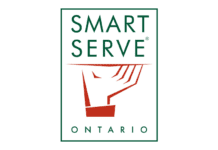VoIP technology is changing the way operators communicate with customers and suppliers
ood ordered, food assembled, food passed through window into waiting car, transaction complete. Elapsed time: two minutes. For many today, it would seem difficult to improve on this idyllic ode to efficiency. But thanks to a new system of Internet protocol, fast food just got faster. As companies turn their analog voice streams into digital packets that can be transmitted over the Internet, they’re speeding up communications with customers and suppliers alike.
Big players such as Wendy’s and McDonald are switching from traditional phone systems to Voice over Internet Protocol (VoIP) to boost customer service and cut costs. And, instead of building centralized call centres, manned by full-time staff — with all the real estate and labour costs that entails — companies are creating virtual call centres manned by part-time teleworkers who are paid per call, says Jeff Lorenz, VP of Marketing at Primus, a Toronto-based VoIP provider.
“When you call Pizza Hut or Swiss Chalet, you’re probably getting a teleworker. Now that almost everyone has an Internet connection at home, you can set up cheaper distributed systems across geographies and time zones. The customer doesn’t need to know where the client service rep is,” says Lorenz.
VoIP is moving downstream to medium-sized players too. Pizza Pizza, a chain operating 350 restaurants across Canada, has been using VoIP along with a mixture of in-house agents, home-based agents and outsourced agents since 2005. The company is currently expanding nationally, and VoIP makes it easy to engage new markets with a streamlined system, says Pat Finelli, chief marketing officer for the company. “VoIP allows us to diversify agents across multiple platforms. Our call centre operates with fewer interruptions, is more flexible than traditional call centres and cost effective,” he says.
One significant customer benefit that Pizza Pizza and other foodservice companies can offer, thanks to the latest in telephone technology, is one central telephone number for ordering in a particular geographic area. The process actually routes calls to the outlet that’s nearest to that particular customer. This gives national or regional chains the ability to use one catchy, jingle-backed phone number, which, in essence, becomes the phone number for any customer’s local outlet. “You can only do that kind of intelligent routing with VoIP,” says Rob Arnold, Atlanta-based senior industry analyst at global consultancy, Frost.
Arnold adds that smaller players are also taking advantage of VoIP. Many sports bars that have cable TV and just need basic voice services are ditching their analog service. “They can get cheaper phone service from their cable providers, since they can use the existing broadband wiring for voice and bundle it with their cable service.”
Related digital services such as fax over IP are also very popular with foodservice companies, he says. “They use it for ordering with their suppliers and customers. Since it’s software-based, there’s no paper, but it’s trackable, so you can store orders and retain records.”
For example, Labatt Food Service, which sends out about 350 faxes per day, implemented a fax over IP system last year because of the problems associated with traditional fax, such as analog lines locking up and fax blasts going to wrong destinations.
What’s more, new features can be offered once calls are digitized, says Arnold. “Many companies are offering click-to-call numbers on their websites. Say a customer has a smartphone and is browsing for an Italian restaurant, with one click, they can call to get directions or make a reservation.” And, self-service for customers via voice commands, instead of keying in numbers on phones, can be done more effectively with VoIP, compared with traditional analog systems, he adds. “Anything foodservice companies can do to get customers to their food faster, helps them.”
While many of these newer capabilities might surprise some managers, the pace of change seems destined to only increase, as more advanced technologies are fully deployed. Arnold says new IP-related communications services will be available in the future. These include presence-based services, which allow calls made to different numbers — office, home, or mobile — to be routed to one number and follow a person depending on their location. “Calls that ring at their desks would be routed to restaurant managers, who are moving around. And, managers could track where their delivery drivers are with one smartphone device. Presence service could also be set up so customers would be able to track a driver’s progress online, like tracking a UPS package.”
At the end of the day, foodservice operators can, and are continuing to rely on today’s analog platforms, but suffice it to say, VoIP, despite being new to the restaurant game, is gaining serious traction. And, if it’s supplying your competition with an edge, be that on the customer or the supply side, it may be time to rewrite your protocols.



















